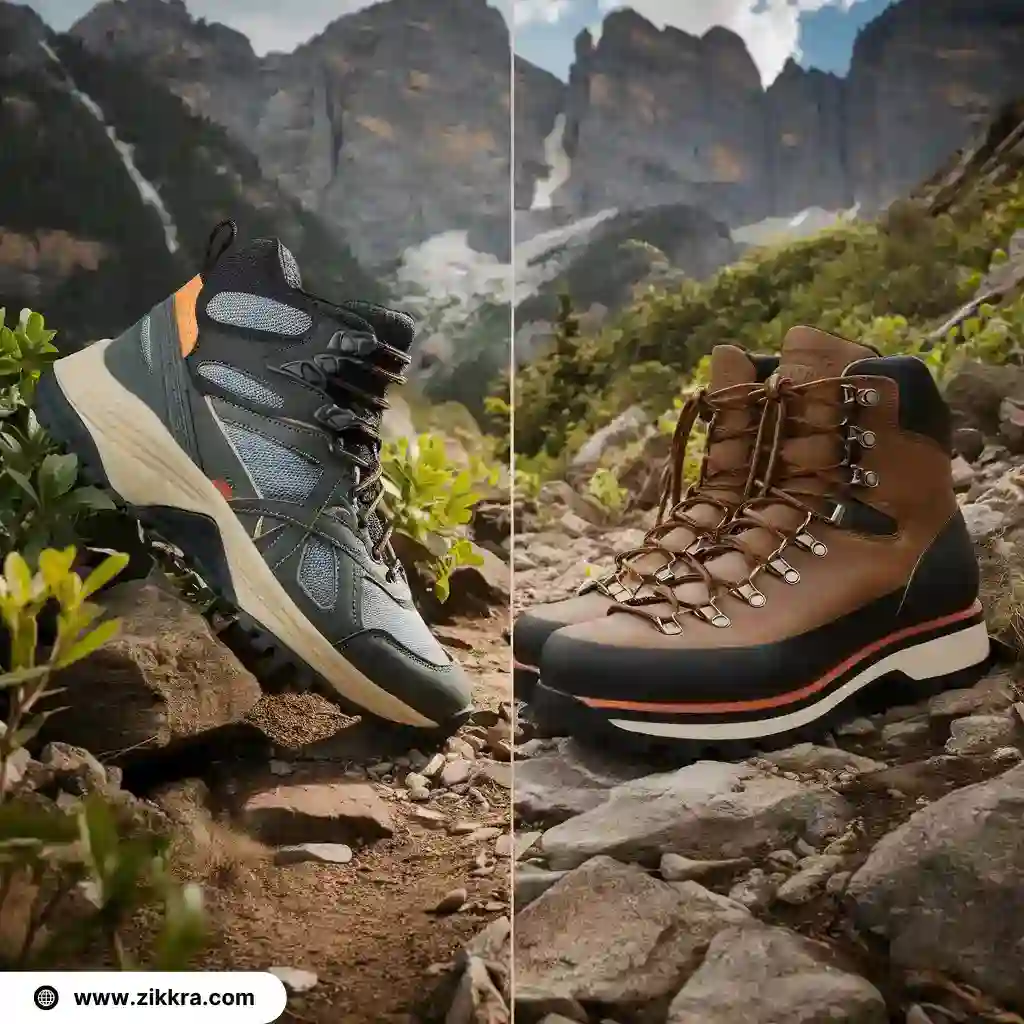Hiking vs Trekking Boots: A Trekker's Perspective
Table of contents
When it comes to exploring the great outdoors, choosing the right footwear is essential. Many adventurers often find themselves debating between hiking boots and trekking boots. While both serve a similar purpose, they have distinct differences that can impact your journey. Whether you’re planning a short hike or a multi-day trekking expedition, selecting the right boots can make all the difference.
In this guide, we’ll explore the key differences between hiking and trekking boots, highlight the importance of materials like leather, and help you determine the best footwear for your adventures.

Understanding the Difference Between Hiking and Trekking Boots
Hiking Boots: Built for Comfort and Light Terrain
Hiking boots are designed for shorter, less demanding trails. They offer lightweight construction, ample ankle support, and flexibility, making them a great choice for day hikes or well-maintained paths. Many hikers prefer brown leather boots for their durability and classic look.
Why Choose Leather Boots for Hiking and Trekking?
Leather is one of the best materials for outdoor boots due to its durability, water resistance, and comfort. **Experienced trekkers highly prefer leather hiking boots **because they provide excellent foot protection and last longer than synthetic alternatives. Here’s why leather boots stand out:
- Durability: High-quality leather withstands harsh environments better than fabric-based boots.
- Water Resistance: Treated leather can repel water, keeping feet dry in wet conditions.
- Breathability: Full-grain leather allows for natural airflow, preventing excessive sweating.
- Ankle Support: Leather boots offer superior ankle protection, reducing the risk of injuries.
Best Leather Hiking Boots for Men
When looking for leather hiking boots for men, it’s crucial to focus on certain features that enhance comfort and durability. Here’s what you need to consider:
Material: Opt for full-grain or nubuck leather for maximum durability.
Sole: Choose boots with a rugged, slip-resistant rubber sole.
Waterproofing: Look for boots with Gore-Tex or a waterproof membrane.
Fit and Comfort: Ensure a snug fit without excessive tightness.
Where to Order Real Leather Boots at an Affordable Price?
If you’re looking for high-quality leather boots without overspending, check out this where to order real leather boots affordable for the best deals on durable trekking footwear.
Leather Hiking Boots vs. Synthetic Boots: Which Is Better?
While leather boots are known for their durability and support, synthetic boots have their own advantages. Here’s how they compare:
| Feature | Leather Boots | Synthetic Boots |
|---|---|---|
| Durability | Extremely durable, lasts for years | Wears out faster over time |
| Comfort | Molds to the shape of the foot over time | Comfortable out of the box |
| Weight | Slightly heavier but offers better protection | Lightweight but less sturdy |
| Waterproofing | Natural water resistance, can be treated for better results | Often comes with waterproof linings |
| Breathability | Requires breaking in but offers good ventilation | Highly breathable, dries quickly |
If you prioritize longevity and support, leather hiking boots are the better option. However, for those who prefer a lighter, more flexible boot, synthetic materials might be the way to go.
How to Maintain Leather Hiking and Trekking Boots
To extend the lifespan of your boots, proper maintenance is key. Here’s how you can take care of your leather boots:
- Clean Regularly – Wipe off dirt and mud after each trek.
- Condition the Leather – Use a leather conditioner to prevent cracking.
- Waterproofing Treatment – Apply a waterproof spray or wax.
- Proper Storage – Store in a cool, dry place to avoid mold and mildew.
- Replace Worn-Out Soles – If the soles are damaged, get them replaced rather than discarding the boots.
Hiking vs Trekking Boots: Common Questions Answered
Why Are Leather Boots the Ideal Choice for Trekking?
Leather boots offer superior durability, waterproofing, and ankle support, making them perfect for long-distance trekking.
What Makes Leather Boots More Durable Than Other Trekking Footwear?
Leather is naturally strong and resistant to wear and tear, ensuring that trekking boots last longer than synthetic options.
How Do Leather Boots Compare to Synthetic Options for Trekking?
While synthetic boots are lighter and more flexible, leather boots provide unmatched durability, better protection, and long-term comfort.
Can Leather Boots Provide Enough Comfort for Long Trekking Journeys?
Yes, once broken in, leather boots mold to the foot’s shape, offering excellent comfort for long treks.
What Are the Key Features to Look for in Trekking Leather Boots?
Look for full-grain leather, waterproof membranes, cushioned insoles, and rugged outsoles for the best trekking experience.
By selecting the right boots for your outdoor adventures, you ensure maximum comfort, protection, and durability on the trails!




